Northeast Wilderness
Trust

2023 Annual Report

We’re different. For more than two decades, Northeast Wilderness Trust has taken a distinctive approach to land conservation. Rather than emphasizing the (many!) ways that conservation benefits people, we prioritize the broader community of life. We inquire: What does a land protection opportunity offer the fungi who live there, the mole salamanders, the bobcats, the ironwood and spruce, the wrens and warblers? How can we be better neighbors to our wild kin?
In seeking an answer to these questions, the path forward becomes clear: rewilding. Rewilding means letting Nature heal and enabling natural processes, which have shaped life on Earth for billions of years, to unfold freely. These processes not only birthed the diversity of life, but also laid the foundation for human civilization. Northeast Wilderness Trust rewilds land by partnering with Nature and protecting landscapes as forever wild.
Of course the Wilderness Trust does not hold the position that every acre of the region should be forever wild. On the contrary, our vision is that the Northeast United States will one day have a resilient and connected landscape of wildlands and a human culture that recognizes and values such places. Such a vision also includes well-managed woodlands, vibrant farmlands, and human communities that flourish within—and because of—Nature’s abundance.
While acknowledging the complementary nature of wildlands, woodlands, farmlands, and communities, we also acknowledge the status quo falls short. There is an urgent need to significantly expand protected wildlands in the Northeast.
In the following pages, we delve into our vision in greater detail, what we are doing to create a wilder future, and offer an overview of successful recent conservation projects that reflect the power and promise of rewilding.
Thanks to a rapidly growing circle of supporters, Northeast Wilderness Trust now safeguards more than 82,000 acres of recovering wilderness across northern New York and New England. We consider that a good start toward a wilder tomorrow.
For the Wild,
 Jon Leibowitz, President and CEO
Jon Leibowitz, President and CEO

1
Alder Stream Wilderness Preserve Hepatica
Investing in Wilderness
In 2023, Northeast Wilderness Trust, along with Harvard Forest and Highstead, co-published Wildlands in New England, the first study to map and quantify all permanently conserved lands in a single U.S. region that are managed to be forever wild. The study’s findings are sobering: less than four percent of New England enjoys that highest level of conservation status. The report serves as a call to action to protect at least 10 percent of the region as forever wild, which equates to 2.7 million acres of additional core wild areas across New England. Such a goal is ambitious but achievable.

A roughly equivalent amount of forever-wild conservation land has been protected by New York state alone in the Adirondack and Catskill Forest Preserves. But wilderness advocates across New England will need to make headway fast to capitalize on currently modest
land values and reap the ecological, economic, cultural, and climatic benefits that more wilderness protection will provide.
Essentially all of the region’s privately held wildlands and many of the region’s most loved public natural areas—including Acadia National Park, Camel’s Hump State Park, and Baxter State Park (New England’s largest single wilderness area)—have their roots in private philanthropy. For more than a century individuals and groups of people who loved the land have been using their time, influence—and wealth—to buy and conserve wildlands. Because the vast majority of our region is in private ownership, this historic tradition of wildlands philanthropy remains a crucial tool to advance Nature conservation across New England and beyond.
As the region’s only land trust devoted exclusively to wilderness protection, Northeast Wilderness Trust is uniquely suited to help lead the way as efforts to conserve wildlands accelerate in the years and decades to come. More investment = more wild core areas anchoring a growing regional network of conservation lands.
2
Barred Owl
VERMONT

MASSACHUSETTS
CONNECTICUT
Baxter State Park
FOREVER-WILD PLACES PROTECTED BY NEWT
Forever-Wild Place
Conserved in 2023

Other Protected Wilderness*
*GAP 1 status: Permanently Secured for Nature and Natural Processes, per TNC Secured Areas Database
NEW YORK
Adirondack Park
Catskill Park
NEW HAMPSHIRE
MAINE CANADA
Rewilding
Back to the Basics

When conservationist Dave Foreman coined “rewilding” in the early 1990s, he used the term as poetic shorthand for wilderness recovery on a scale that would allow large carnivores like wolves and cougars to resume their vital role in healthy ecosystems. In the succeeding decades the word has been widely adopted— including even for non-conservation related matters like gut health and to back-to-the-land movements. In the beginning, though, Foreman and ecologist Reed Noss framed the idea of continental scale wilderness recovery on the “3 Cs”—Cores, Corridors, and Carnivores. This framework for rewilding remains central to Northeast Wilderness Trust’s work.
Cores
Core wild areas, also known as protected areas, are regions where natural processes operate and biodiversity is preserved without significant human interference. In other words, forever-wild or wilderness landscapes. These areas serve as vital habitats for shy and sensitive wildlife, and for species that prefer or even require conditions generated by unhindered natural succession, like old-growth forests. There is no rewilding without wilderness. Northeast Wilderness Trust was founded to protect such places— the wild cores in the managed landscape.
4
Old-growth hemlocks Woodbury Mountain Wilderness Preserve Cougar kitten

Corridors Carnivores
Corridors are habitat linkages between core areas that allow for the movement of wildlife, including plants, and facilitate migration and dispersal. These linkages or “wildways” help combat habitat fragmentation by connecting isolated habitats, thereby promoting genetic diversity and enhancing resilience. Northeast Wilderness Trust works in several important wildlife corridors throughout the region such as the Algonquin to Adirondacks Corridor (A2A) and Split Rock Wildway in New York, and the Worcester to Kingdom Corridor in Vermont. The Appalachian Trail also serves as an important linkage for wildlife and people; the Wilderness Trust protects various wild places alongside the trail from Connecticut to Maine.

Large carnivores often serve as keystone species that play a crucial role in ecosystem dynamics and functioning; the rippling impacts throughout the food web from their removal or addition to an ecosystem are called “trophic cascades.” In the Northeast, various smaller carnivores including pine marten, bobcat, and Canada lynx are important ecological actors but the region’s two apex carnivores, wolves and cougars, are missing. Restoring wolf and cougar populations will help rebalance predator-prey dynamics and promote healthier ecosystems overall.
5
Cumulative Since 2002
82,065 acres protected
11,140 acres of wetlands

247 miles of rivers and streams


6,764,803 metric tons of carbon stored* 43,669 acres of designated Important Bird Areas
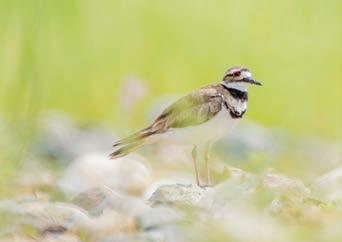
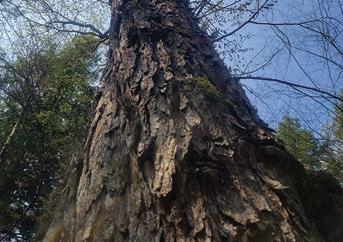
*The Nature Conservancy Resilient Land Mapping Tool
6
Wild
Impact
In 2023
6,354 acres protected
4,656 camera hours logged for wildlife project 15 completed transactions
10 rewilding forest research plots established
58 miles of boundaries marked

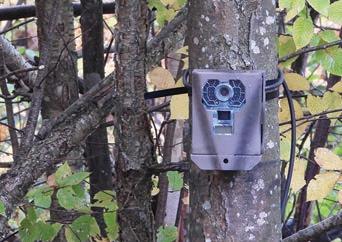



7

Wild Places Protected in 2023
Moriah Wilderness Preserve
In New York’s Champlain Valley 1,775 acres began their forever-wild future in 2023. The new Moriah Wilderness Preserve is well situated to support wildlife movement between Lake Champlain and the Adirondack Mountains. The Preserve sits directly on the transition between two geologic stories: the ancient rocks of the Adirondack Dome to the west, and the sediments deposited in Glacial Lake Vermont in the Champlain Valley to the east. Often referred to as the West Champlain Hills, this region is one of the most biologically diverse in the Adirondack Park.
The forests that occupy Moriah Wilderness Preserve today are determined by those geologic histories, and also by more recent human choices. The northern half of the land has been extensively logged, and much of the forest is at an early successional stage, sporting young poplar, white pine, sugar maple, beech, and yellow birch. The southern half hosts some more mature forest with larger trees, beautiful wetlands, and streams that tumble over logs and branches—all important features of a healthy watershed. The summit of Armstrong Mountain and its surrounding hills host open glades of moss and reindeer lichen, dotted with pines and oaks. Occasional stands of hemlock shade mossy ledges throughout the property.
Now protected, the young forests of the Moriah Wilderness Preserve will have the freedom to rewild, adapt, and evolve on their own terms.

Moriah, New York
1,775 acres
Contains the summit of Armstrong Mountain (2,042')
To jumpstart rewilding, two abandoned structures were demolished
9
Moriah Wilderness Peserve Coyote pup

Bear’s Nest Wilderness Preserve
The northern Green Mountains of Vermont are one of the wildest, yet least protected areas in the Northeast, according to the Staying Connected Initiative. In this area where already so little land is conserved, even less was protected as wilderness. That changed when Northeast Wilderness Trust acquired 730 acres on the west flanks of the Green Mountains. A variety of trees provide ample forage—from seeds and nuts (called hard mast) to fruits like elderberry, serviceberry, black cherry, and mountain ash (soft mast). Bear, deer, grouse, and small mammals dine on this cornucopia, and carnivores such as foxes and owls hunt their well-fed prey. Cliffs and boulders provide safe dens for porcupines and bobcats. Deer spend the winter in the shallower snow beneath sheltering balsam fir and red spruce. Montane Spruce-Fir and Montane Yellow Birch-Red Spruce Forests, both uncommon forest types in Vermont, thrive in the higher elevations. Mountaintop forests like these are the preferred nesting habitat for the increasingly rare Bicknell’s Thrush.
Bear’s Nest Wilderness Preserve gets its name from plentiful beech trees where a number of “bear nests” are found. These are made when a bear sits in a tree and pulls branches closer to eat beech nuts, breaking them until they resemble nest at the tree’s crown—but they do not sleep here.
This initial acquisition for Bear’s Nest Wilderness Preserve is just the beginning of a new core wild area that Northeast Wilderness Trust is working to establish in the northern Green Mountains, with more acres being added in 2024 through a second acquisition.

Richford, Vermont
730 acres
Part of a 32,000-acre forest block
Contains entire watershed of a headwater stream
11
Bear’s Nest Wilderness Preserve Beech

Sargent Hill Wilderness Preserve
In the foothills of the Taconic Mountains, as the forested terrain begins its descent towards the Champlain Valley, the recovering forests of the Sargent Hill Wilderness Preserve have been given a rare gift: time.
Located just south of The Nature Conservancy’s High Pond Natural Area, the Sargent Hill Wilderness Preserve builds on thousands of acres of already conserved land within a much larger forest block known as the Greens to Adirondacks Wildlife Corridor. The area is crucial for east-west wildlife movement.
A large beaver-influenced Alder Swamp greets visitors entering from Monument Hill Road, with smaller forested swamps and seepage areas dotting the upland forest. Wetlands like these provide important early spring food sources for energy-strapped animals after a long winter. Headwater streams begin at elevation on the property, flowing down the sides of Sargent Hill in all four cardinal directions and eventually making their way to the Poultney River and the South Bay of Lake Champlain.
This rewilding forest was protected thanks to the generosity of Hadley and Dick Ferguson. The Fergusons purchased the property in the spring of 2021, with the intention of conserving it. Dick passed away in 2023, soon after he knew the wild fate of their beloved land. Hadley has since continued working with Northeast Wilderness Trust to ensure its lasting protection.

Hubbardton, Vermont
191 acres
Nesting habitat for 20 bird species listed as Species of Greatest Conservation Need (SGCN)
Provides habitat for two endangered bat species documented in the area
13
Sargent Hill Wilderness Preserve American beaver

Rosalind and Fred Slavic Wilderness Preserve
Tucked into New Hampshire’s Rhododendron State Park, the 300-acre Rosalind and Fred Slavic Wilderness Preserve is characterized by majestic old oaks, beeches, maples, and yellow birches well on their way to becoming an old-growth forest of tomorrow.
The Preserve cradles a mile of Kemp Brook in the eastern basin of a modest mountain called Little Monadnock. A headwater stream, Kemp Brook is shaded by the forest canopy and its banks are held by the woven roots of surrounding trees, resulting in cool clear water important for healthy fish populations. Crystalline pools aerated by riffles and runs likely support native brook trout. Kemp Brook flows into the Millers River, which in turn feeds the Connecticut River. Throughout the Preserve, beaver wetlands are interspersed with hemlock-shaded ravines.
The Preserve is well on its way to its future as an old-growth forest. Rosalind and Fred Slavic bought their property in the 1960s. The Slavics had a vision to make it a safe haven for wildlife. They began pursuing this dream in 1987, working with the State of New Hampshire, the Forest Society, and the New Hampshire Audubon Society to add a conservation easement to a portion of their land. The couple later decided to donate their property to Northeast Wilderness Trust to further secure the land’s forever-wild future.
The Slavic Preserve marks Northeast Wilderness Trust’s 11th forever-wild project in New Hampshire’s Monadnock region.
Fitzwilliam, New Hampshire
300 acres
Home to State Threatened (S2) Rhododendron maximum shrubs
Contains one mile of Kemp Brook

15
Rosalind and Fred Slavic Wilderness Preserve Rhododendron maximum
Thousand Islands Land Trust conservation easements
Thousand Islands Land Trust (TILT), which conserves a portfolio of lands along and near the St. Lawrence River in upstate New York, recognizes the value of setting aside some of its holdings for biodiversity protection and to serve as a baseline for future research. In 2023, TILT enrolled in the Wildlands Partnership, adding additional protections to four of its preserves by conveying forever-wild easements to the Wilderness Trust.
The TILT lands represent the region’s mosaic of rock outcrops, calcareous woodlands, and embedded wetlands. This geologically unique area known as the Frontenac Axis serves as a critical connection between Canada’s Algonquin Provincial Park and the Adirondack Park; the “A2A” wildlife corridor is a binational focus area for conservation.
Bicknell’s sedge, Carey’s sedge, round lobed hepatica, bloodroot, maidenhair fern, woodland sunflower, and wild ginger found on the lands indicate the limy soils typical of this region. Those species and other will benefit now that rewilding is poised to shape these lands moving forward. A 60-foot rock elm stands tall at the Many Oaks Preserve and is emblematic of the future of the forest.
Thousand Islands Region, New York
2,083 acres 4 total projects

1,746 acres of wetlands
Home to globally rare Alvar Pavement Grassland
16
Salisbury Association Land Trust conservation easements
Salisbury Association Land Trust permanently protected 682 acres of wildlands, conveying forever-wild easements to the Wilderness Trust on six of its preserves. The preserves fall within the “Green Mountains to Hudson Highlands” wildlife corridor, identified by the Staying Connected Initiative as a key linkage to restore landscape connectivity and reduce the impacts of habitat fragmentation.
Three of the six preserves are adjacent to the Appalachian Trail, where they provide refugia for wildlife and accommodate the movement of species across the landscape. Spanning over 1,000 feet of elevation gain, these topographically complex lands harbor a range of species, habitats and community types. Mature black oak, hickory and chestnut oak shade dry summits, while extensive yellow birch roots weave together the banks of tumbling brooks.
The wild impact of the Wildlands Partnership in Connecticut
is substantial. Only 26,000 acres are protected as wildlands statewide, which is less than one percent of the State’s land. Since 2022, the Wildlands Partnership has added 1,057 new forever-wild acres to Connecticut.
Salisbury, Connecticut 682 acres; 4 easements, 6 preserves
1.25 miles along the AT corridor
Habitat of the timber rattlesnake, a Connecticut endangered species
Northeast Wilderness Trust’s Wildlands Partnership offers partner land trusts funding to protect forever-wild land. Since its inception in 2020, the initiative has conserved 8,954 wild acres across Connecticut, New York, and Maine.

17
Thousand Islands Land Trust conservation easements Timber rattlesnake
Flint Mountain Wildlands conservation easement
In Albany Township, Maine, Northeast Wilderness Trust now holds a forever-wild conservation easement on 295 acres. Owned by Mahoosuc Land Trust (MLT), this new wildland is home to towering red oaks and sprawling colonies of lady’s slippers orchids.
Flint Mountain Wildlands is MLT’s first forever-wild preserve, created to allow Nature to flourish with minimal human intervention. MLT acquired the land and then donated an easement to Northeast Wilderness Trust in 2023.

Albany, Maine
295 acres
Encompasses the 1,300' summit of Flint Mountain 0.55 miles of headwater streams
This land includes the summit of Flint Mountain, where the ridgeline is populated by an oak and pine forest carpeted with heath shrubs and brightened by pink lady’s slippers in early summer. A handful of enormous red oaks are well over 100 years old. These centenarians spent their youth in cleared pastures grazed by sheep. Today they are witness to a recovering forest that has seen no significant logging in 70 years and has been promised a future of freedom.
Two streams that feed the Crooked River offer wild brook trout habitat. Outcrops of feldspar bedrock host porcupine dens and may provide hibernacula for bats. The Flint Mountain Wildlands lie between the White Mountain National Forest and MLT’s 12,300-acre Crooked River Headwaters conservation easement, extending habitat protections within a known wildlife corridor.
The former landowner, Charles “Ken” Wille, generously sold the land at a bargain price to make this conservation success possible.
18
Pink lady’s slipper American chestnut burr at Children’s Woods & Carey Park
Children’s Woods & Carey Park conservation easement

Each town should have a park, or rather a primitive forest of five hundred or a thousand acres, where a stick should never be cut for fuel, a common possession forever, for instruction and recreation.
Henry David Thoreau Journal, October 15, 1859
Thanks to the foresight of the Town of Jaffrey, New Hampshire, people will have a wild park for “instruction and recreation” forever. All 142 acres of Children’s Woods & Carey Park are now protected with a forever-wild conservation easement donated by the Town of Jaffrey and held by the Wilderness Trust. Forever-wild protection means Children’s Woods & Carey Park will one day be an old-growth forest within walking distance to the center of Jaffrey. Large old trees already provide homes for nuthatches, chickadees, and woodpeckers on the property, and extensive wetlands are habitat for frogs and waterfowl alike.
This conservation easement is part of a pilot program at Northeast Wilderness Trust connecting human communities to protected natural communities. These projects will offer the chance for people to feel, breathe, and experience wildness close to home. Email Bob Linck at bob@newildernesstrust.org if you’d like to learn more or have ideas for future projects.
Jaffrey, New Hampshire
142 acres
It has been 90 years since the forest was last cut
Home to a mature American Chestnut tree
19
Stewardship and Rewilding
Land Stewards play an ever-expanding role at Northeast Wilderness Trust as the need for on-the-ground care increases with more forever-wild acres. Stewardship is a commitment made to these lands in perpetuity, but what does that look like in practice?
In addition to routine work like boundary maintenance, signage, and rule enforcement, stewards focus on partnering with Nature to encourage rewilding—by simply allowing forests security and freedom to grow. In 2023, at preserves in New Hampshire and New York, stewards took more active roles, successfully coordinating the removal of three buildings. The sites of these former structures are indicators that a wilder future awaits.
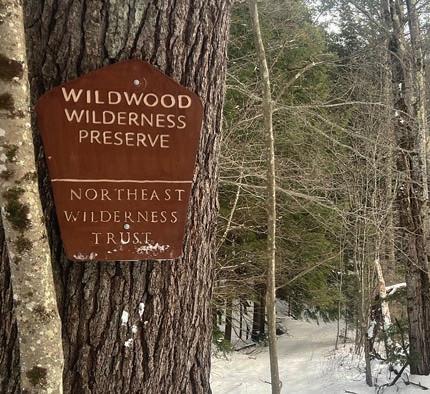
As Northeast Wilderness Trust’s stewardship team has grown, so has the Wildlands Ecology Program, which seeks to answer questions concerning passive rewilding and natural forest recovery.
During summer of 2023 at Maine’s Grafton Forest Wilderness Preserve, stewards established ten forest research plots. The team collected inventories of plant cover, coarse woody debris, and tree sizes and species. They learned, through days of careful observation and stacks of field guides, exactly whose homes they are the guardians of. The plots will be resurveyed every five years.
Additional accomplishments for the Stewardship program in 2023 included:
Marked 58 miles of boundaries on 13 properties
Installed several barriers to deter motorized vehicle use
Built and installed six signs welcoming the public to preserves and sanctuaries

20
Welcome sign at Wildwood Wilderness Preserve Grafton Forest Wilderness Preserve Grafton research plot
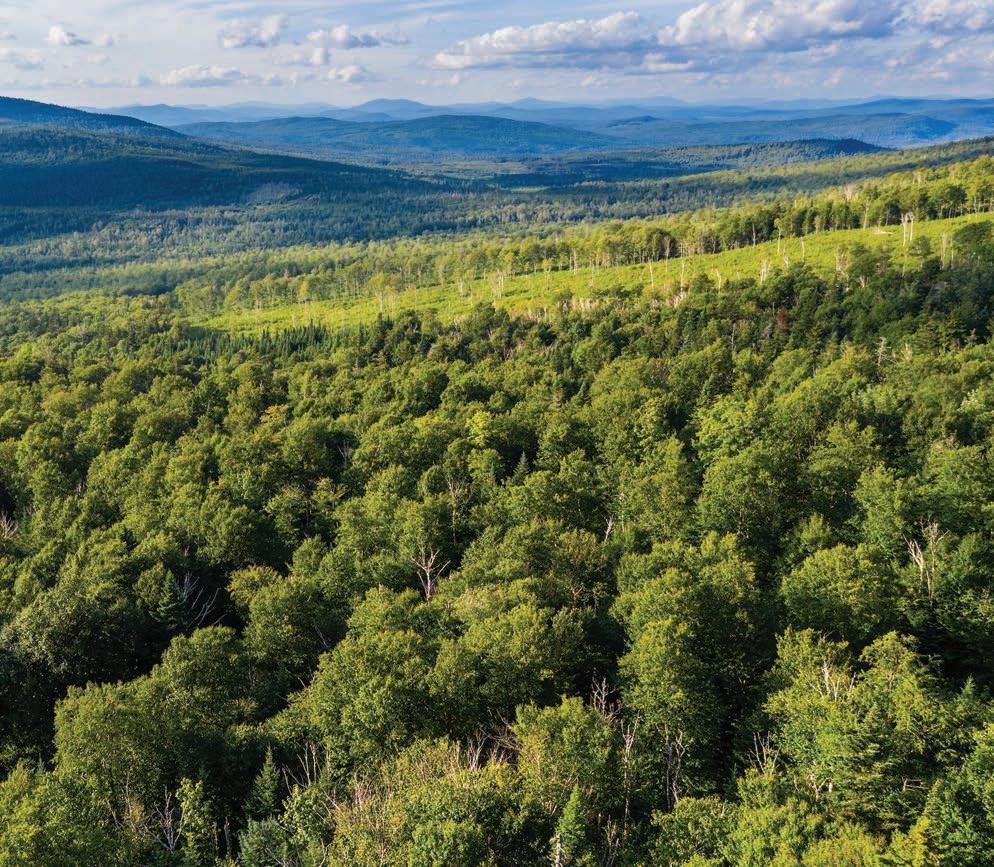

21
Ancient Forest Society

For every acre of land safeguarded, Northeast Wilderness Trust’s commitment is forever: forever wild, forever granted the freedom and time needed to grow older, more complex, and more diverse.
A commitment to the creatures who make their homes in these special places, so that they can raise their families without disruption.
A future of wild abundance begins with our actions today. By including Northeast Wilderness Trust in your will or estate planning, individuals can join the Ancient Forest Society to build a lasting wild legacy. Together, we can ensure that there is always room for wild places in the Northeast. Your planned gift supports our diligent efforts to create the ancient forests of tomorrow—places teeming with life, where generation after generation of our wild kin will forever find their home.
Explore your wild legacy through planned giving options by contacting Nicie Panetta, Vice President of Advancement at 802-224-1000 x111 or nicie@newildernesstrust.org.
We decided to make a planned gift to Northeast Wilderness Trust to push back against the tides that have inexorably degenerated our forest ecosystems. Forests in the Northeast should be far older than they are now; rich with big, old trees, snags, and logs. It takes a very long time for a forest to reach this condition. We’ve made a long-term commitment to Northeast Wilderness Trust so that the relatively young forests we see today can ultimately become old forests, cherished mainly for their intrinsic ecological value.
—Malcolm “Mac” Hunter and Aram Calhoun
22
Board of Directors
Welcoming
Kathleen Fitzgerald Kathleen has over two decades of experience in large landscape conservation and development programs in Africa, Central America, and North America. She served as Vice President at the African Wildlife Foundation and as a partner at Conservation Capital. She has created new protected and conserved areas, established public-private-community partnerships, improved management and financial sustainability of protected areas and led climate resiliency programs. Kathleen now serves as Project Director of Enduring Earth at The Pew Charitable Trusts and a Senior Advisor to the World Bank’s Global Wildlife Program. Kathleen was a co-founder of Northeast Wilderness Trust and served as its first Executive Director.

Liz Thompson Liz Thompson is a conservation ecologist and botanist based in Vermont. She recently retired from a 40-year career in land conservation, including 20 years teaching Field Botany and Ecology at the University of Vermont. Liz co-authored Wetland, Woodland, Wildland, A Guide to the Natural Communities of Vermont, as well as Vermont Conservation Design and, most recently, Wildlands in New England: Past, Present, and Future. Liz’s current favorite pastime is walking in nature with a camera, finding the beauty in small and ordinary things.


Northeast Wilderness Trust thanks outgoing Board members Paul Torrence and Randy Kritkausky for their years of service. We are deeply grateful for their many contributions to the organization.
Farewell
23
Financial Statements for Fiscal Year 2022–23
Summary Statement of Financial Position as of June 20, 2023
Wilderness Trust Corporation was incorporated in 2002 in Vermont as a 501(c)3 organization. All contributions to the Wilderness Trust are tax-deductible to the fullest extent of the law. Audited financial statements available upon request.

24
Assets Cash 7,455,174 Pledges Receivable 2,251,530 Conservation Land 20,705,486 Investments 12,670,933 Other Assets 1,010,127 Total Assets $44,093,250 Liabilities
Net Assets Accounts payable and accrued expenses 151,870 Net Assets Without Donor Restrictions Undesignated 24,816,140 Board Designated 12,164,554 With Donor Restrictions 6,960,686 Subtotal 43,941,380 Total Liabilities & Net Assets $44,093,250 Northeast
Income Expenses 91% Contributions and Grants 4% Investment Return 5% Program—Other Income 97% Program Activities 2% Fundraising 1% General Management
and
Ermine
Northeast Wilderness Trust Conserves Forever-wild Landscapes for Nature and People
Board of Directors
Jonathan Leibowitz, VT President and CEO
Mark Anderson, MA Chair
Susie O’Keefe, ME Vice Chair
Rick Rancourt, VT Treasurer
Brian Tijan, VT Secretary
Emily Bateson, VT
Kristin DeBoer, MA
Brett Engstrom, VT
Kathleen Fitzgerald, VT
Carol Fox, NY
Daniel Hildreth, ME
Eric Sorenson, VT
Henry Tepper, MA
Liz Thompson, VT
Annie Faulkner, NH emeritus
Staff
Eric Bailey Wildlands Ecology Fellow
Tricia Bhatia Carbon and Transaction Specialist
Tom Butler Senior Fellow
Becky Clough Northern New England Land Steward
Sophie Ehrhardt Vermont Land Steward
Hannah Epstein Stewardship Director
Joe Falconeiri Southern New England Land Steward
Jeff Fournier Finance Director
Madeleine Hatoum Digital & Tech Coordinator
Janelle Jones New York Land Steward
Bob Linck Conservation Director
Caitlin Mather Senior Land Protection Manager
Erin Meiman Operations Director
Shelby Perry Wildlands Ecology Director
Nicie Panetta Vice President of Advancement
Nathaniel Williams Grants Manager
Mandy Yonkman Donor Impact Coordinator
Photo
Becky
Mark
Grace
Larry
Stephen
David
Shelby
Thousand
Paul
www.newildernesstrust.org 802.224.1000
Credits Eric Bailey 19
Clough 7 (bottom center right), 21 (right)
Elbroch 5 (right)
Glynn 15
Master 24
Matter 6 (bottom center right), 7 (top), 8, 12, 23
Middleton 1, 2 (bottom center left), 9 Jerry Monkman inside front cover, 5 (left), 6 (top), 10, 21, 22
Perry 4, 6 (bottom left, right), 7 (bottom left, right), 11, 14, 18
Islands Land Trust 16
Willis 7 (bottom center left), 13 iStock.com/MarkNH 17
Printed on 100% post-consumer, processed chlorine-free paper and backed by our Green Guarantee. Front: Canada lynx David Middleton Back: Moriah Wilderness Preserve Stephen Matter




 Jon Leibowitz, President and CEO
Jon Leibowitz, President and CEO








































